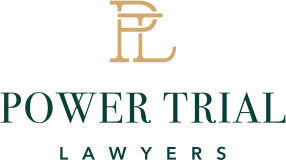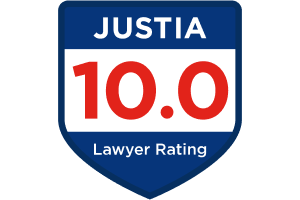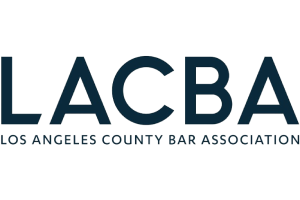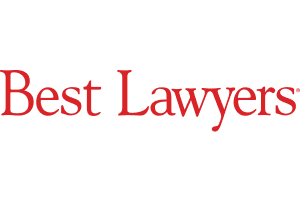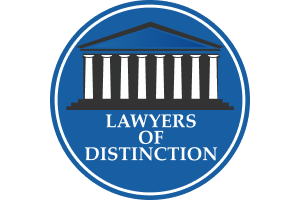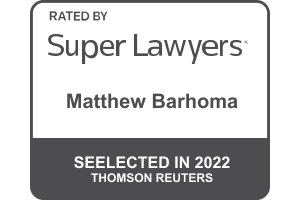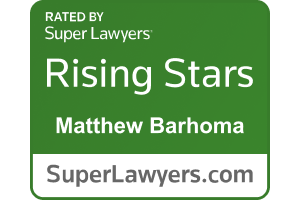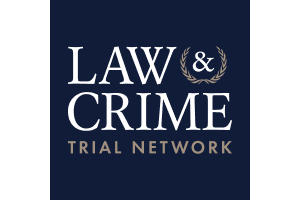- Free Consultation: (888) 808-2179 Tap Here to Call Us
What Happens After an Arraignment in Los Angeles and Orange County Criminal Cases
The arraignment marks only the beginning of the criminal process in Southern California. For most people, it is their first appearance in court—and their first glimpse into how serious and complicated the next stages can become. Understanding what happens after an arraignment in Los Angeles and Orange County criminal cases is critical, because the choices made in the days and weeks that follow can determine whether a case ends in dismissal, a reduced charge, or a conviction.
At Power Trial Lawyers, we have guided hundreds of clients through every post-arraignment stage in Los Angeles, Orange County, Riverside, San Bernardino, and Ventura. Our attorneys use early strategy to shape outcomes—challenging bail, uncovering hidden evidence, and setting the groundwork for negotiation or trial.
If you’ve just been arraigned or have a loved one who has, you are entering one of the most sensitive windows of your case. The sooner you act, the greater your defense advantage. Call 888-808-2179 now for a confidential consultation with a defense lawyer who knows every courthouse in Southern California.
Understanding the Arraignment
An arraignment is the first formal hearing where a defendant is informed of the charges, enters a plea, and has bail or release conditions reviewed. It’s governed by California Penal Code § 988 et seq. and applies to both misdemeanors and felonies.
Typical events at arraignment include:
- Reading of charges – the judge or prosecutor states each alleged violation.
- Entry of plea – “not guilty,” “guilty,” or “no contest.”
- Appointment or confirmation of counsel.
- Setting of bail or own-recognizance release.
- Scheduling of the next appearance.
Once the plea is entered, the focus shifts from formal accusation to case management and preparation—the start of a long sequence of hearings, motions, and negotiations that define what happens after an arraignment in Los Angeles and Orange County criminal cases.
Why the Arraignment Is Only the First Chapter
Many people believe the arraignment decides everything. In reality, it only opens the door. The most meaningful defense work happens after that hearing, when deadlines, evidence, and strategy begin to collide.
In Los Angeles County, defendants leaving arraignment at Clara Shortridge Foltz (CCB) or Van Nuys Courthouse West often receive a notice to return within ten court days for a pre-preliminary or early-disposition conference. Orange County’s Central Justice Center follows similar practice, assigning early readiness hearings to discuss plea offers and discovery status.
During this period, your lawyer can:
- Request bail reconsideration if new information supports release.
- File discovery demands under Penal Code § 1054 to obtain police reports, witness statements, and body-worn camera footage.
- Conduct independent defense investigations, including scene visits, forensic analysis, and interviews.
- Preserve surveillance footage before it’s automatically deleted.
- Begin negotiating with the district attorney to explore diversion, charge reduction, or dismissal.
Each of these steps forms part of the strategy for managing what happens after an arraignment in Los Angeles and Orange County criminal cases—a period where evidence is most vulnerable, and prosecutorial decisions are still fluid.
Immediate Deadlines After the Arraignment
The clock starts ticking as soon as the arraignment ends. California’s statutory timelines protect the defendant’s right to a speedy process, but they also impose strict scheduling pressure:
- Felony cases: A preliminary hearing must occur within 10 court days of arraignment unless the defendant waives time (Penal Code § 859b).
- Misdemeanor cases: Trial must commence within 30 days for in-custody defendants and 45 days for those out of custody (Penal Code § 1382).
- Bail review motions can be filed at any time upon showing good cause (Penal Code §§ 1270-1275.1).
Understanding these rules ensures the defense can control the tempo of the case rather than being swept along by the prosecution’s calendar.
Bail Review and Release Conditions
One of the first strategic opportunities after arraignment is bail modification. If bail was set too high—or if circumstances change—your attorney can file a motion to reduce bail or seek release on your own recognizance (“OR release”).
At Power Trial Lawyers, we routinely bring bail-reconsideration motions supported by evidence of community ties, employment, and lack of flight risk. We also challenge excessive bail under the Eighth Amendment and California’s Humphrey decision, which requires judges to consider ability to pay and non-monetary alternatives.
For many clients, securing release early can dramatically affect the rest of the case—allowing better preparation, employment retention, and family stability.
Discovery Begins Immediately
Another key component of what happens after an arraignment in Los Angeles and Orange County criminal cases is discovery—the formal exchange of evidence between prosecution and defense.
Under Penal Code § 1054 et seq., prosecutors must provide:
- Police and incident reports
- Witness statements and 911 recordings
- Photographs, video, and body-camera footage
- All exculpatory evidence (anything favorable to the defendant)
The defense, in turn, must disclose any expert reports or witness lists it plans to use at trial. At Power Trial Lawyers, we don’t wait passively for discovery; we send formal demand letters, follow up with court-ordered motions, and launch our own private investigations.
Why Early Defense Work Is Crucial
The time immediately following arraignment is when evidence is fresh, witnesses are available, and opportunities for case dismissal are highest. Surveillance systems overwrite footage, digital data gets lost, and memories fade. Acting now can make the difference between a resolved case and a trial nightmare.
That’s why Power Trial Lawyers treats the post-arraignment phase as the investigative sprint—the chance to collect exonerating proof before it disappears.
Local Court Practices Matter
Each Southern California courthouse handles the post-arraignment process differently:
- Los Angeles County: Courts like CCB, LAX, and Compton often schedule “pre-prelim” conferences within a week to explore early settlements.
- Orange County: Judges in Santa Ana’s Central Justice Center frequently set early readiness hearings to assess discovery and negotiation status.
- Riverside and San Bernardino: These courts emphasize prompt preliminary hearings and active bail reviews.
Knowing these procedural variations is essential to mastering what happens after an arraignment in Los Angeles and Orange County criminal cases, because timing, judge assignment, and prosecutorial culture differ from courthouse to courthouse.
Early Case Strategy: Turning Defense into Offense
While the prosecution builds its case, a proactive defense team can quietly dismantle it.
Our attorneys routinely:
- Analyze police-body-cam discrepancies.
- File preservation letters to prevent destruction of evidence.
- Interview witnesses before they are influenced by police narratives.
- Engage expert witnesses for forensic and psychological evaluation.
By the time the next hearing arrives, we already know the case’s pressure points—and often, so does the prosecutor.
Consult With a Southern California Criminal Defense Lawyer
Arraignment is the moment the courtroom process begins, but the real defense starts the second you step outside that courtroom door. The next several weeks bring critical deadlines, hearings, and negotiation windows that will shape your entire case outcome.
Next, we examine those first critical weeks—how to navigate discovery, preliminary-hearing timelines, and pretrial negotiations—and how Power Trial Lawyers uses that time to set clients on the path toward dismissal or reduced charges.
If you or someone you love has just been arraigned in Los Angeles or Orange County, don’t wait. Call 888-808-2179 or submit a confidential online inquiry today.
The First Critical Weeks After Arraignment
After the arraignment ends, the case enters its most decisive stage — the first few weeks where evidence develops, hearings are set, and timelines begin to run. This period defines what happens after an arraignment in Los Angeles and Orange County criminal cases because it determines how the prosecution, defense, and court system will shape the trajectory of your case.
At Power Trial Lawyers, we consider this the “opening game” of criminal defense — where timing, precision, and local experience matter more than anything else.
The Clock Starts Immediately: Key Legal Deadlines
From the moment you’re arraigned, a series of statutory deadlines begins. These are designed to protect your right to a speedy and fair trial, but they can also create pressure if not strategically managed.
Preliminary Hearing Deadlines (Felonies)
Under California Penal Code § 859b, anyone charged with a felony must receive a preliminary hearing within 10 court days of arraignment unless the defendant personally waives time. This hearing determines whether there is enough probable cause for the case to proceed to trial.
A well-timed waiver can buy the defense more time to gather evidence, investigate, and negotiate. But a premature waiver — or no strategy at all — can cause irreversible disadvantage. Power Trial Lawyers reviews every deadline against your goals: fight fast or build slow.
Speedy Trial Rights (Misdemeanors)
For misdemeanor cases, California Penal Code § 1382 requires trial within:
- 30 days if you are in custody; or
- 45 days if you are out of custody.
These timeframes can be extended (“waived”) with your consent, but never automatically. Every waiver should serve a purpose — such as obtaining missing police footage, preparing motions, or leveraging plea negotiations.
Understanding these timelines is fundamental to mastering what happens after an arraignment in Los Angeles and Orange County criminal cases, since they form the scaffolding of everything that follows.
Early Hearings and Conferences
Los Angeles and Orange County courts have developed early case settings designed to promote negotiation and efficiency. These include Pre-Preliminary Hearings, Early Disposition Conferences (EDCs), and Pretrial Readiness Hearings.
Pre-Preliminary Hearing Conference
In Los Angeles Superior Court, especially at the Clara Shortridge Foltz (CCB) and Van Nuys courthouses, the Pre-Preliminary Hearing allows early dialogue between the defense and prosecution. Attorneys can:
- Assess what discovery has been provided,
- Identify weaknesses in the prosecution’s case,
- Negotiate early plea offers or diversion programs, and
- Flag upcoming motions like Penal Code § 1538.5 suppressions.
The best outcomes often occur at this early stage, before prosecutors invest heavily in litigation.
Early Disposition Conference (EDC)
Orange County’s Central Justice Center uses EDCs to explore early settlement or diversion. These hearings are vital in understanding what happens after an arraignment in Los Angeles and Orange County criminal cases, as they offer the first real opportunity to resolve a case favorably before trial.
Power Trial Lawyers routinely uses EDCs to present mitigation packets — employment records, family background, treatment enrollment, or restitution payments — to demonstrate our client’s character and humanity.
Discovery: Building the Defense Through Evidence
The days following arraignment mark the start of California’s reciprocal discovery process, governed by Penal Code § 1054 et seq.. This is when the prosecution must provide all evidence they plan to use — but in practice, they often delay, omit, or redact key materials.
The Prosecution’s Obligations
The District Attorney must turn over:
- Police reports and arrest narratives
- Body-worn camera and dashcam footage
- Witness statements and 911 recordings
- Photographs, forensic tests, and medical records
- All exculpatory or impeaching evidence under Brady v. Maryland
The Defense’s Response
Defense counsel has the right — and duty — to compel disclosure if the prosecution withholds information. Power Trial Lawyers aggressively enforces these rights through:
- Informal discovery letters,
- Motions to compel production, and
- Court orders sanctioning noncompliance when necessary.
We also supplement state discovery with private investigation, scene analysis, and independent expert evaluation. This proactive approach ensures our clients never walk into court blind.
Private Investigation and Defense Preparation
The first few weeks after arraignment are when defense teams must investigate independently. The state’s narrative — written by police officers — is not the final word.
Power Trial Lawyers deploys private investigators and forensic experts to uncover truths the reports omit. Common investigative steps include:
- Visiting the alleged crime scene to document layout and visibility,
- Interviewing witnesses who were never contacted by police,
- Retrieving digital evidence (video, texts, GPS, call logs), and
- Consulting forensic or psychological experts to challenge assumptions.
For example, in one Los Angeles felony assault case, our investigator found surveillance footage from a nearby business that contradicted the accuser’s statement — leading to full dismissal at the preliminary hearing.
This is exactly what happens after an arraignment in Los Angeles and Orange County criminal cases when the defense takes control early: the narrative changes, leverage shifts, and dismissal becomes possible.
Managing Bail and Release Conditions
If bail was set at arraignment, this window offers another chance to revisit it. Under Penal Code § 1275, the court can modify bail “at any time upon good cause shown.”
Power Trial Lawyers frequently files bail-review motions supported by documentation like:
- Proof of employment or school attendance,
- Stable housing verification,
- Family dependents or caregiver responsibilities,
- Character reference letters, and
- Evidence of lawful behavior since release.
Judges may reduce bail, grant own-recognizance release, or modify restrictions like curfews or stay-away orders. Clients often don’t realize these conditions are negotiable — and they can change the outcome of the case.
Strategic Communication with Prosecutors
During this post-arraignment period, the defense can make meaningful contact with the District Attorney. This communication — handled correctly — can steer the case away from trial and toward resolution.
Our attorneys know the local culture of each courthouse. Prosecutors in Los Angeles County tend to prioritize public safety optics and prior record. In Orange County, they often emphasize victim input and restitution. Understanding these values helps us negotiate persuasively, often before formal offers are made.
This advocacy, done early and strategically, defines the difference between reacting to charges and directing the outcome.
Leveraging Diversion and Pretrial Programs
California now offers several diversion options that can resolve a case without conviction — if pursued early.
Common Programs After Arraignment
- Misdemeanor Diversion (PC § 1001.95) – dismissal after program completion.
- Mental Health Diversion (PC § 1001.36) – treatment instead of prosecution.
- Veterans Court (PC §§ 1170.9, 1170.91) – rehabilitation programs for service members.
- Drug Diversion (PC § 1000) – for low-level narcotics offenses.
Each requires timely application, supporting documentation, and negotiation with prosecutors. Many defendants miss these opportunities simply because their lawyer didn’t act fast enough after arraignment.
Power Trial Lawyers evaluates every client for diversion eligibility as part of our standard post-arraignment review.
Why These Weeks Are the Turning Point
In every California criminal case, the first three weeks after arraignment often determine the final outcome.
This is when the evidence is fresh, plea options are fluid, and judges are still open to leniency.
By the time the preliminary hearing arrives, the prosecution will have committed to a version of events — one that may already be unraveling if your defense began early.
This is the core of what happens after an arraignment in Los Angeles and Orange County criminal cases: a race between the state’s momentum and your lawyer’s ability to slow, dissect, and redirect it.
Client Guidance: What You Should Do Right Now
If you or a family member has recently been arraigned:
- Do not discuss your case with anyone other than your attorney.
- Preserve all communications, texts, and social media related to the incident.
- Gather documentation (employment, education, medical, military, counseling) that could support mitigation or diversion.
- Stay proactive — the defense begins now, not later.
Every moment counts in these first weeks, and Power Trial Lawyers is ready to act within hours.
Transition and Call to Action
The period immediately following arraignment is where the defense can win before trial even begins. From discovery control to bail modification, early negotiation, and pretrial motion planning, each move has ripple effects that influence everything to come.
Next, we’ll break down the key hearings and motions that occur next — including the preliminary hearing, motions to suppress, and dismissal under Penal Code § 995 — and how each can be leveraged for your defense.
If you’ve recently been arraigned, don’t wait until your next court date to seek counsel. Call Power Trial Lawyers at 888-808-2179 or submit a confidential inquiry today.
Our early intervention could make the difference between a conviction and a clean slate.
Key Hearings and Pretrial Motions
Once arraignment ends and the early investigative window closes, your case moves into the heart of the criminal process — hearings and motions that can make or break the prosecution’s case. These proceedings define what happens after an arraignment in Los Angeles and Orange County criminal cases, because this is where evidence is tested, credibility is challenged, and dismissals often occur.
For defendants and families, this stage can feel overwhelming — but for a skilled defense team, it’s the phase where leverage peaks. Every procedural opportunity becomes a strategic weapon. At Power Trial Lawyers, we navigate these hearings daily across Southern California courts, knowing how to time each motion and argument for maximum impact.
The Preliminary Hearing: The First Real Battle
Purpose and Legal Standard
In felony cases, the preliminary hearing is the first evidentiary showdown between the defense and the prosecution. Governed by Penal Code § 859b, it determines whether the State has shown probable cause to hold the defendant for trial — a much lower standard than “beyond a reasonable doubt.”
Despite that lower standard, this hearing is often a defense turning point. It exposes the weaknesses in the prosecution’s case, locks in witness testimony for impeachment at trial, and can trigger plea reductions or dismissals. Understanding the preliminary hearing’s function is central to understanding what happens after an arraignment in Los Angeles and Orange County criminal cases.
What Happens During the Hearing
- The prosecutor presents live witnesses, often the investigating officer or the alleged victim.
- The defense cross-examines, testing inconsistencies and bias.
- The judge decides whether sufficient evidence exists for trial (“holding order”).
A well-prepared defense can challenge probable cause, attack hearsay exceptions, and reveal that key elements are missing. For example, if an alleged victim’s testimony is inconsistent with police reports or surveillance footage, the judge may refuse to “hold” the case for trial.
Defense Strategies in the Preliminary Hearing
Power Trial Lawyers treats every preliminary hearing like a mini-trial. We:
- Pin down police officers to their version of events for later impeachment.
- Demand production of body-worn camera footage for context.
- Expose weaknesses in eyewitness identification, forensic handling, or chain of custody.
- Argue lack of intent, knowledge, or credible corroboration.
In one Los Angeles County weapons case, we cross-examined a detective on his own report inconsistencies — resulting in a dismissal under Penal Code § 871 before trial. That is precisely what can happen after an arraignment in Los Angeles and Orange County criminal cases when the defense uses this stage aggressively.
Suppression Motions (Penal Code § 1538.5)
After arraignment — and often after the preliminary hearing — the next major tool is a motion to suppress evidence under Penal Code § 1538.5. This challenges the legality of police searches, seizures, and arrests.
Common Grounds for Suppression
- Unlawful traffic stops or detentions.
- Searches without valid consent, warrants, or probable cause.
- Improperly executed warrants (wrong address, expired, or lacking specificity).
- Miranda violations, where officers interrogate after you invoke your right to silence or counsel.
- Evidence derived from illegal actions (“fruit of the poisonous tree”).
If the court grants the motion, all illegally obtained evidence — drugs, firearms, confessions, even witness identifications — can be excluded from trial.
Why Suppression Motions Matter
In many cases, the suppression hearing is the make-or-break moment. Without that evidence, prosecutors may have no case left. This is why suppression motions are a core part of what happens after an arraignment in Los Angeles and Orange County criminal cases — they decide whether the government can even proceed.
Example: Challenging an Illegal Stop
In an Orange County DUI case, our attorneys proved that officers lacked reasonable suspicion for the initial stop. The court granted the motion to suppress all subsequent evidence — breath results, statements, and field tests — leading to full dismissal.
Every defendant should know: procedural violations can end cases, even when the facts seem bad.
Motion to Dismiss Information or Indictment (Penal Code § 995)
If a case survives the preliminary hearing, the next opportunity for attack comes through a § 995 Motion — a challenge to the legal sufficiency of the evidence or the magistrate’s decision.
When It Applies
A 995 motion is filed after the preliminary hearing, arguing that the court improperly held the defendant to answer or relied on inadmissible evidence. It’s a direct way to ask a higher judge to review whether probable cause truly existed.
Common 995 Motion Arguments
- The magistrate admitted hearsay beyond what Evidence Code § 1200 allows.
- The officer’s testimony lacked personal knowledge.
- The prosecution failed to establish intent or corroboration.
- Evidence was obtained through unconstitutional means.
If successful, a § 995 motion can strike entire counts — or dismiss the case completely. At Power Trial Lawyers, we regularly file these motions in Los Angeles County (CCB, Compton, Van Nuys) and Orange County (Santa Ana, Fullerton) courts, tailoring arguments to the preferences of each judicial district.
Discovery Motions and Compliance Hearings
Discovery doesn’t end after arraignment — it evolves. Prosecutors often fail to provide new reports, forensic results, or digital evidence as required under Penal Code § 1054.1.
When this happens, defense counsel can file motions to compel discovery, forcing production of missing evidence and potentially obtaining sanctions or dismissal for willful noncompliance.
How This Strengthens the Defense
A well-timed discovery motion achieves three goals:
- Forces the prosecution to reveal hidden weaknesses.
- Preserves appellate issues for later if the court refuses disclosure.
- Demonstrates to the DA that the defense is organized and aggressive — often prompting better plea offers.
Discovery litigation is a hallmark of what happens after an arraignment in Los Angeles and Orange County criminal cases because it sets the tempo: either the prosecution complies, or the defense exposes the gaps.
Plea Negotiations During Motion Practice
Many cases resolve during this phase — between the preliminary hearing and motion practice. Prosecutors realize that continued litigation will expose weaknesses, and judges often encourage early resolution.
Power Trial Lawyers’ Approach
We never negotiate from weakness. Instead, we use evidence uncovered through discovery and motions to reframe leverage:
- “If this evidence is suppressed, the People cannot prove possession.”
- “If your witness contradicts the report, the credibility damage is irreversible.”
- “If mitigation is accepted, my client qualifies for diversion.”
By combining procedural precision with persuasive storytelling, we negotiate outcomes that align with our clients’ goals — dismissal, diversion, or drastically reduced charges.
Local Practice Insights
Understanding local procedure is the hidden edge in these hearings.
- Los Angeles Superior Court: Preliminary hearings at CCB or Van Nuys often occur before specialized magistrates; knowing which judges favor certain evidentiary objections matters.
- Orange County: Judges in Santa Ana often allow extensive cross-examination at prelims but enforce strict discovery compliance — timing is everything.
- San Bernardino and Riverside Counties: Courts emphasize statutory timelines — missing a filing window can forfeit suppression rights.
Our attorneys appear in these courts weekly, using that local familiarity to anticipate rulings and adapt strategies.
Client Perspective: What to Expect
For clients, this phase can feel like the “middle stretch” — technical and intense, yet often decisive. Here’s what to anticipate:
- You may attend hearings where lawyers argue motions without witnesses.
- Some appearances involve your presence; others are waived.
- If motions are granted, you may walk away with a dismissal.
- If denied, you still gain valuable insight into the prosecution’s case.
The process may seem slow, but every hearing builds momentum toward a strategic goal: resolution or acquittal.
Consult with a Southern California Criminal Defense Attorney
Hearings and motions are where cases transform — from reactive defense to proactive offense. They’re also the stage where precision lawyering matters most. Filing the right motion, on the right day, before the right judge can determine freedom or conviction.
Next, we’ll examine plea negotiations, diversion opportunities, and trial preparation — where strategy meets human judgment and persuasion.
If your case is now in the hearing or pretrial stage, call Power Trial Lawyers at 888-808-2179 or send a confidential online inquiry. Our defense team knows exactly what happens after an arraignment in Los Angeles and Orange County criminal cases — and how to turn that knowledge into results.
Plea Negotiations, Diversion, and Trial Readiness
After discovery and motion practice, many cases reach the critical crossroads between settlement and trial. This is the stage where strategy, timing, and persuasion intersect — and where an experienced defense attorney can profoundly change the outcome.
For defendants, understanding what happens after an arraignment in Los Angeles and Orange County criminal cases during the negotiation and pretrial phase is essential to avoiding the long-term consequences of a criminal conviction.
At Power Trial Lawyers, we approach this period with one goal: securing the best possible result before trial ever begins. Whether that means negotiating a dismissal, diversion, or a drastically reduced charge, our attorneys use every advantage built since arraignment to tip the balance in our clients’ favor.
Why Most Cases Resolve Before Trial
Nationwide, more than 90% of criminal cases end before a jury is ever seated — and Southern California is no exception.
The post-arraignment phase gives defense counsel opportunities to present mitigation, attack the prosecution’s weaknesses, and open discussions about resolution. Judges and prosecutors alike prefer reasonable outcomes that serve justice without consuming court resources.
What distinguishes Power Trial Lawyers is not merely seeking settlement — it’s creating leverage that drives favorable offers. By the time we reach this phase, we’ve already challenged the legality of evidence, cross-examined witnesses at the preliminary hearing, and exposed inconsistencies that prosecutors must now explain.
That’s why negotiation power is one of the most important aspects of what happens after an arraignment in Los Angeles and Orange County criminal cases.
The Anatomy of Plea Negotiations
1. Timing the Approach
Negotiations can begin at any stage, but the best outcomes often arise:
- After the preliminary hearing, when the prosecution realizes its weaknesses; or
- Before the trial readiness conference, when both sides weigh risk versus reward.
Our attorneys understand that timing is leverage. Early offers may be poor; later offers often improve after motions expose evidentiary gaps.
2. The Role of Mitigation
Mitigation is the art of humanizing the accused. Judges and prosecutors see hundreds of case files, but they rarely see the person behind them. We change that.
At Power Trial Lawyers, we prepare detailed mitigation packets that include:
- Employment and school records
- Character reference letters
- Certificates from treatment or counseling
- Evidence of community service or restitution
- Proof of rehabilitation and family support
These materials are persuasive tools that show our clients are not defined by their worst day. Presenting this information can turn an aggressive prosecution into a negotiated second chance.
3. Communication and Strategy
Our team engages prosecutors with professionalism and authority, blending legal argument with human narrative. We never plead from weakness; we negotiate from evidence and preparation.
For example, if suppression motions have exposed constitutional issues, or witness testimony faltered during cross-examination, we highlight those weaknesses to push for dismissal or drastic reductions.
This balanced, strategic advocacy defines what happens after an arraignment in Los Angeles and Orange County criminal cases — an active process of reshaping how the State views the defendant.
Exploring Diversion and Alternative Dispositions
In recent years, California has expanded opportunities for non-conviction resolutions, allowing many defendants to avoid traditional punishment if they qualify for treatment or rehabilitation programs.
These diversion pathways have become central to what happens after an arraignment in Los Angeles and Orange County criminal cases, especially in misdemeanors and low-level felonies.
1. Misdemeanor Diversion (Penal Code § 1001.95)
Judges can suspend prosecution and dismiss charges after successful completion of conditions such as community service, counseling, or restitution. No guilty plea is required — meaning no criminal conviction.
2. Mental Health Diversion (Penal Code § 1001.36)
Defendants with qualifying mental health diagnoses can receive treatment instead of conviction. Power Trial Lawyers frequently works with mental-health professionals to document eligibility and prepare compelling petitions for entry into this program.
3. Veterans Diversion (Penal Code §§ 1170.9, 1170.91)
Military service members and veterans suffering from PTSD, TBI, or related conditions may qualify for specialized rehabilitation courts emphasizing treatment, not incarceration.
4. Drug Diversion (Penal Code § 1000)
Applicable to certain first-time or low-level drug possession offenses. Upon completion of a treatment plan, charges are dismissed.
Diversion programs require meticulous filing and negotiation. Courts and prosecutors scrutinize eligibility closely, and success often depends on early preparation — proof of diagnosis, community support, and treatment commitment.
At Power Trial Lawyers, we treat diversion like a second trial: persuasive petitions, expert letters, and documented compliance. The payoff is freedom and a clean record.
Pretrial Readiness and Trial Preparation
If diversion or settlement fails, the case moves toward trial readiness. This stage demands preparation at the highest level, both legal and logistical. It’s where your defense is stress-tested — and where our firm’s experience as seasoned trial lawyers matters most.
Pretrial Conferences
At pretrial conferences, the court reviews the case’s readiness, pending motions, and any remaining discovery disputes. The prosecution must confirm which witnesses they will call and what evidence they will present.
Power Trial Lawyers uses these conferences to lock prosecutors into their theories and identify inconsistencies that will later undermine credibility.
Motions in Limine
These are pretrial motions seeking to exclude or admit evidence before trial begins. Common requests include:
- Excluding prior bad acts under Evidence Code § 1101(b),
- Limiting hearsay,
- Excluding inflammatory photos or prejudicial statements, and
- Protecting client rights under Evidence Code § 352 (unfair prejudice).
Winning these motions can redefine the trial landscape before a single juror is sworn in.
Jury Instructions and Burden of Proof
Defense counsel must anticipate the California Criminal Jury Instructions (CALCRIM) that will control the jury’s deliberations:
- CALCRIM 220 – Presumption of innocence and burden of proof.
- CALCRIM 226 – Evaluating witness credibility.
- CALCRIM 3470 – Self-defense.
Preparing early ensures the defense story aligns with these legal frameworks.
Trial Logistics and Strategy
Trial readiness involves much more than facts — it’s about presentation.
At Power Trial Lawyers, we choreograph every element: witness sequencing, expert testimony, exhibit flow, and theme continuity. This thoroughness ensures that if negotiation fails, trial becomes our strongest leverage point.
How Early Defense Work Pays Off
Every pretrial victory — from suppressed evidence to favorable rulings — compounds during negotiation. Prosecutors remember which cases are battle-ready and which are not.
Our clients benefit from that reputation. When the District Attorney knows Power Trial Lawyers is fully prepared for trial, settlement terms improve dramatically.
That’s why strategic preparation defines what happens after an arraignment in Los Angeles and Orange County criminal cases — because preparation itself is a negotiation tool.
Local Insight: Southern California Court Practices
- Los Angeles County (CCB, Van Nuys, Compton): Judges often encourage pretrial settlement to clear congested calendars. Defense presentation of mitigation before trial can yield substantial charge reductions.
- Orange County (Santa Ana, Fullerton): Courts emphasize formal readiness conferences; early filing of motions in limine often signals professionalism and credibility.
- Riverside and San Bernardino: These venues prioritize speedy trial scheduling; readiness must be accompanied by actual readiness — not bluffing.
Our attorneys navigate these cultures daily, adjusting strategy by courthouse, courtroom, and prosecutor.
Contact a Southern California Criminal Defense Lawyer
The plea negotiation and pretrial phase is where the law meets judgment, compassion, and persuasion. A skilled attorney doesn’t wait for trial to defend you — they fight right now, using preparation as leverage to win before a jury is ever selected.
Next, we’ll explore trial, sentencing, and post-conviction options — the final stages of what happens after an arraignment in Los Angeles and Orange County criminal cases, including verdict outcomes, probation, expungement, and record-clearing relief.
If your case is moving toward trial, or you’re uncertain about plea options, now is the moment to secure focused, strategic representation.
Call Power Trial Lawyers at 888-808-2179 or submit a confidential online inquiry.
Our attorneys know every step — and how to turn post-arraignment complexity into opportunity.
Trial, Sentencing, and Beyond
The final stages of a criminal case determine not only liberty but reputation, livelihood, and future opportunities. Understanding what happens after an arraignment in Los Angeles and Orange County criminal cases doesn’t end with negotiations — it includes trial preparation, sentencing advocacy, and, if necessary, post-conviction action to restore freedom and dignity.
At Power Trial Lawyers, our representation doesn’t stop when a plea is entered or a verdict is read. We stand beside our clients through every phase — from trial to appeal — ensuring the justice system remains accountable.
Trial: When Negotiation Ends and Advocacy Begins
The Purpose of Trial
When negotiations fail or the client chooses to fight, the case moves to trial — a constitutional arena where guilt or innocence is determined. In California, felony defendants are entitled to a jury trial under the Sixth Amendment and California Constitution, Article I, §16.
Trial begins long before opening statements. Every piece of discovery, every pretrial motion, and every witness interview forms the foundation of your courtroom defense. Knowing what happens after an arraignment in Los Angeles and Orange County criminal cases means knowing how to transform months of preparation into a compelling, credible narrative for twelve jurors.
Phases of a California Criminal Trial
- Jury Selection (Voir Dire) – Selecting impartial jurors who can evaluate evidence fairly.
- Opening Statements – Each side outlines its story and theory of the case.
- Prosecution’s Case-in-Chief – The People present witnesses and exhibits.
- Defense Cross-Examination – The cornerstone of Power Trial Lawyers’ strategy — exposing inconsistencies, bias, and doubt.
- Defense Case – Presenting witnesses, experts, or evidence to affirm innocence or create reasonable doubt.
- Rebuttal and Closing Arguments – Condensing weeks of evidence into a clear, persuasive narrative for acquittal.
- Verdict – The jury must unanimously find guilt beyond a reasonable doubt.
If even one juror remains unconvinced, the result can be a hung jury or mistrial, providing leverage for dismissal or renegotiation.
Defense Themes at Trial
At Power Trial Lawyers, our trial advocacy combines precision law with human storytelling. Common defense themes include:
- Reasonable doubt and flawed investigation – highlighting gaps in police work.
- Mistaken identity – challenging unreliable eyewitnesses.
- Self-defense or defense of others – where the law permits protective action.
- Accident or lack of intent – emphasizing absence of criminal purpose.
- Constitutional violations – reminding jurors that unlawfully obtained evidence undermines justice.
These narratives humanize clients and hold the prosecution to its burden — the highest standard in law.
Sentencing: The Court’s Decision Point
When a defendant pleads guilty, no-contest, or is convicted at trial, the next step is sentencing. This stage defines the penalty — but it also offers powerful opportunities for mitigation and leniency.
Understanding how sentencing works is vital to knowing what happens after an arraignment in Los Angeles and Orange County criminal cases, because the defense’s work continues here with equal intensity.
The Sentencing Triad (Penal Code §1170(b))
California uses a determinant sentencing triad — lower, middle, and upper terms. The judge must select the middle term unless aggravating factors outweigh mitigation.
Aggravating factors may include:
- Use of a weapon (§12022.5)
- Prior serious felonies (§667)
- Great bodily injury (§12022.7)
Mitigating factors under California Rules of Court, Rule 4.423 include:
- Minimal criminal history
- Voluntary restitution
- Mental health or substance-abuse treatment efforts
- Provocation or emotional stress
At Power Trial Lawyers, we prepare sentencing memoranda that merge legal argument with personal narrative — the client’s background, accomplishments, and remorse. We present letters from employers, family, clergy, and treatment providers to give judges reason to choose the lowest term or probation.
Probation, Diversion, and Alternatives to Jail
Even at sentencing, incarceration isn’t the only outcome.
Depending on the charge and prior record, the court may grant:
- Probation with counseling or community service.
- Split sentences under Penal Code §1170(h) (“AB 109” realignment), combining jail and supervised release.
- Electronic monitoring or residential treatment instead of custody.
- Judicial diversion completion for those already enrolled under §1001.95 or §1001.36.
These alternatives preserve employment, family connections, and rehabilitation opportunities. They also demonstrate how flexible and strategic what happens after an arraignment in Los Angeles and Orange County criminal cases can become with the right legal advocacy.
Post-Conviction Remedies and Record Clearing
A conviction or guilty plea is not the end of the road. California law provides multiple post-conviction remedies that can reduce sentences, overturn judgments, or erase records.
1. Motion for New Trial (Penal Code §1181)
Filed when new evidence emerges, juror misconduct occurs, or legal error prejudiced the verdict. If granted, the case restarts as though no trial happened.
2. Direct Appeal
Must be filed within 60 days of judgment under Cal. Rules of Court, Rule 8.308. Appeals challenge legal errors — improper rulings, jury instructions, or prosecutorial misconduct.
3. Writ of Habeas Corpus (Penal Code §1473)
Challenges unlawful imprisonment or constitutional violations, often based on ineffective assistance of counsel, new evidence, or actual innocence.
4. Expungement (Penal Code §1203.4)
After completing probation, eligible defendants may petition to have the conviction dismissed and record cleared for employment purposes.
5. Certificate of Rehabilitation and Governor’s Pardon
For more serious felonies, these restore civil rights and signify rehabilitation — crucial for professionals, license holders, and immigrants seeking stability.
Each of these post-conviction actions illustrates that what happens after an arraignment in Los Angeles and Orange County criminal cases extends far beyond sentencing — justice can still be reclaimed.
The Human Side of Post-Arraignment Defens
The court process is legal, but its effects are deeply personal.
Clients face lost employment, family stress, and reputational harm. At Power Trial Lawyers, our defense doesn’t end with paperwork — we coordinate counseling, expungement workshops, and reentry planning.
For many, the journey from arraignment to final relief marks the difference between despair and restoration.
Regional Insights: How Sentencing Differs by County
- Los Angeles County: Judges often weigh alternative sentencing heavily in early plea stages. Character evidence and treatment enrollment carry significant influence.
- Orange County: Prosecutors emphasize deterrence; presenting mitigation and rehabilitation proof early in the process can reshape outcomes.
- Riverside/San Bernardino: Courts move quickly; written sentencing memoranda filed well before the hearing often secure better terms.
- Ventura County: Judicial discretion tends toward probation in non-violent cases with credible rehabilitation efforts.
Knowing these local patterns ensures clients benefit from strategies calibrated to each jurisdiction’s culture — another reason Power Trial Lawyers is trusted across Southern California.
Why Choosing the Right Firm Matters
Every defendant deserves more than representation — they deserve strategy.
From the moment of arraignment through sentencing and appeal, our team builds cases that anticipate, not react. We integrate trial preparation, mitigation, and post-conviction planning from day one.
That holistic model defines what happens after an arraignment in Los Angeles and Orange County criminal casesfor clients of Power Trial Lawyers — a process built not on fear, but on foresight.
Take Control of Your Defense
If you or someone you love faces criminal charges in Southern California, do not wait for the next court date to decide your future. Every hour between arraignment and resolution matters.
Power Trial Lawyers represents clients in Los Angeles, Orange, Riverside, San Bernardino, and Ventura Counties, handling cases from misdemeanors to serious felonies, and from early negotiation through post-conviction relief.
Call 888-808-2179 or contact us inquiry today. Your defense doesn’t start at trial — it starts now.
Frequently Asked Questions (FAQ)
1. What exactly happens after an arraignment in Los Angeles and Orange County criminal cases?After arraignment, the case moves into the pretrial phase, where the defense receives discovery, requests evidence, and may seek bail modification. The next hearings—often an Early Disposition Conference or Pre-Preliminary Hearing—allow your attorney to negotiate, investigate, or challenge the prosecution’s case before trial. Timing, preparation, and legal insight during this stage are crucial.
2. How soon is my next court date after arraignment?In felony cases, the court must hold a preliminary hearing within 10 court days unless you waive time. Misdemeanors usually have a pretrial hearing within a few weeks. Your attorney can sometimes extend these deadlines strategically to gain more time for investigation or negotiation.
3. Can bail be lowered after arraignment?Yes. Under Penal Code §§ 1270–1275.1, the court may revisit bail “at any time upon good cause.” Your lawyer can file a bail-review motion supported by employment records, community ties, or other mitigating evidence. A successful motion can lead to a lower bail, electronic monitoring, or release on your own recognizance.
4. What happens at the preliminary hearing?The preliminary hearing tests whether there is enough evidence for the case to proceed to trial. The prosecution presents witnesses, and your attorney cross-examines them to expose weaknesses or contradictions. If the judge finds insufficient probable cause, the case can be dismissed at this stage.
5. What are the possible outcomes after an arraignment?Cases can end in several ways:
Dismissal for lack of evidence or successful motions.
Diversion or treatment programs leading to dismissal after completion.
Plea agreement reducing charges or penalties.
Trial and acquittal if the jury finds reasonable doubt.
Your defense strategy determines which path is pursued.6. What does “waiving time” mean, and should I do it?“Waiving time” means giving up the right to have your preliminary hearing or trial within the statutory deadline. This can be beneficial if more time is needed to gather evidence, hire experts, or negotiate. However, it must be done thoughtfully—with your lawyer’s guidance—so that the prosecution doesn’t gain an advantage.
7. Can my case be dismissed before trial?Absolutely. Dismissals often occur after successful motions to suppress evidence (PC § 1538.5), motions to dismiss information (PC § 995), or when new evidence undermines probable cause. Early intervention by experienced defense counsel dramatically improves dismissal chances.
8. Are there diversion programs available after arraignment?Yes. California courts offer multiple options, including:
Misdemeanor Diversion (§ 1001.95)
Mental-Health Diversion (§ 1001.36)
Veterans Diversion (§ 1170.9, § 1170.91)
Drug Diversion (§ 1000)
Each allows defendants to complete treatment or community programs instead of suffering a conviction. Your attorney must apply early—usually within weeks of arraignment—to maximize eligibility.9. What happens if I go to trial and lose?If convicted, the case proceeds to sentencing. The judge decides between lower, middle, or upper-term penalties under Penal Code § 1170(b), weighing aggravating and mitigating factors. Even then, your attorney can argue for probation, alternative sentencing, or file post-conviction motions to reduce or vacate the judgment.
10. How can Power Trial Lawyers help me after my arraignment?Power Trial Lawyers represents clients through every post-arraignment phase—bail reviews, discovery, pretrial motions, plea negotiations, trial, and post-conviction relief. We appear daily in Los Angeles, Orange, Riverside, San Bernardino, and Ventura Counties, using local insight to protect your freedom and your record.
Call 888-808-2179 or submit a confidential online inquiry to speak with an attorney today.
